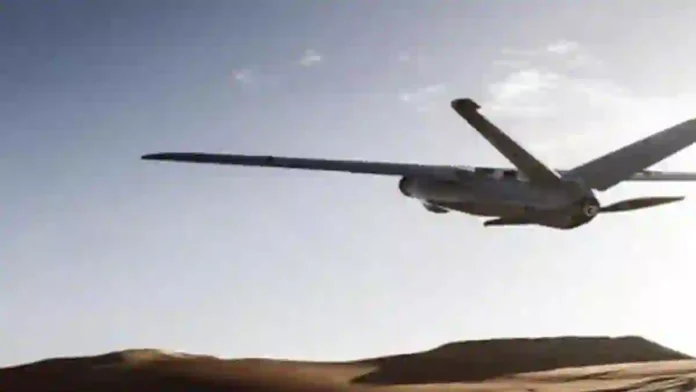Sources – republicworld
India’s strategic testing of the Warmate drone in Ladakh amid tensions with China demonstrates its commitment to bolstering surveillance & attack capabilities
In response to escalating border tensions with China, India has reportedly commenced testing of the Polish-manufactured Warmate drone in the strategic Ladakh region. This drone, also utilised by Ukraine in its conflict with Russia, is designed for targeting small troop detachments and lightly armoured bunkers. The move underscores India’s efforts to bolster its drone capabilities, both for surveillance and attack purposes, following a surprise confrontation with China in eastern Ladakh in May 2020.
Despite its tactical advantages, the Warmate drone has faced numerous challenges. According to multiple reports from Russian Telegram groups, it has been shot down numerous times and even captured for reverse engineering. Furthermore, an Iranian kamikaze drone unveiled recently, bears a striking resemblance to the Warmate.
Strategic Implications of Testing In Ladakh
Tensions in Ladakh have resurged, especially after the discovery of tunnels in the Aksai Chin mountains in satellite images. These tunnels are believed to house ammunition and command and control centres for the People’s Liberation Army (PLA), providing a considerable strategic advantage due to their resilience against enemy artillery or missile strikes.
While the Warmate may only inflict minor damage on such highly fortified facilities, its testing highlights India’s commitment to enhancing its drone capabilities for both surveillance and offensive operations. China, in contrast, boasts a more extensive inventory of various UAVs, ranging from singular to swarm designs, serving purposes from surveillance to logistical supply transport.
Warmate’s Specifications And Usage
A video circulating on social media depicts the Warmate drone undergoing multiple flypasts and executing two belly landings in Ladakh’s challenging terrain. However, it remains uncertain whether belly landings represent the primary mode of recovery or merely an adaptable option based on operational requirements and environmental factors. According to reports by Republic TV, the Warmate has recently been inducted and is currently undergoing trials in Ladakh. However, specific details regarding the quantity of drones acquired and commercial aspects remain undisclosed.
The Warmate operates within a line-of-sight range of 30 kilometres, achieving speeds of up to 80 kilometres per hour, powered by an electric motor. It boasts a wingspan of 1.6 meters, a fuselage length of 1.1 meters, and a maximum take-off weight of 5.7 kilograms. Operating at altitudes ranging from 150 to 300 meters above sea level, it supports various warhead types, including High Explosive and Thermobaric. The drone is semi-autonomous, loitering around a designated target area. Integrated control modules and surveillance subsystems empower operators to maintain control throughout an attack.
Read More – Report: INDIA’S PLAN TO COUNTER CHINA SHIFTS INTO ACTION MODE
India’s Array of Loitering Munitions
In addition to the Warmate, India employs other loitering munitions, such as the Israeli Aerospace Industries’ Harop and the indigenously-developed Tata Advanced Systems Limited’s vertical take-off landing (VTOL) drone, for various military operations. India recently received 100 units of the VTOL drone in March.
Kamikaze drones like the Warmate also serve as basic Intelligence-Surveillance-Reconnaissance (ISR) platforms, capable of aborting attacks and returning to operators. These drones offer valuable tactical insights, and in Ukraine, they work alongside ISR drones to confirm strikes’ impact, assess damage, and inform decisions about follow-up actions.
It remains unclear whether the Indian Army plans to integrate other light ISR drones alongside the Warmate. Collaborative manufacturing arrangements between India and Poland’s WB Electronics for the Warmate are yet undisclosed. Nonetheless, localised production provides the advantage of scaling up production swiftly during wartime, maintaining a substantial inventory, and enabling post-operational tweaks and improvements. As border tensions persist, India continues to expand its drone capabilities, seeking to enhance surveillance, reconnaissance, and defensive capabilities in its strategic regions.




